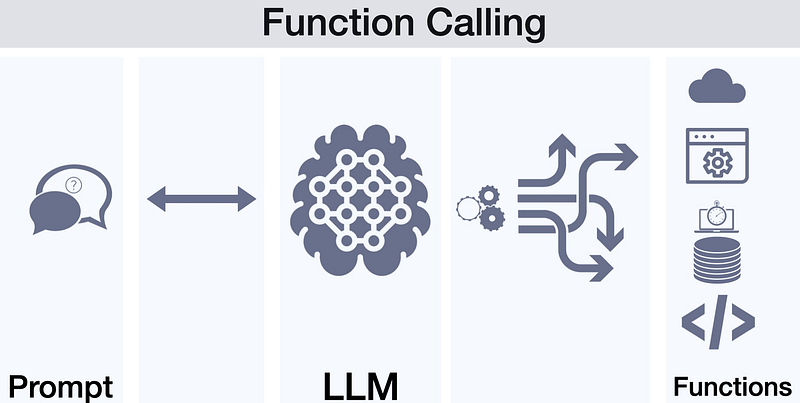Harnessing Function Calling for a Dynamic RAG System
Written on
Introduction to Function Calling in RAG Systems
Incorporating function calling into Retrieval-Augmented Generation (RAG) systems significantly enhances their flexibility and efficiency. This article discusses common challenges faced during RAG system development and proposes function calling as a solution.

Chapter 1: Challenges in RAG System Development
When creating RAG systems, developers frequently encounter issues with chatbot performance, particularly regarding the number of documents retrieved. For instance, using a command like results = db.similarity_search(info, k=5) may yield satisfactory results for some inquiries, but it often falls short for more complex questions that require deeper analysis.
Section 1.1: Variability in Query Complexity
Chatbots may successfully address straightforward queries, but when faced with intricate questions that necessitate comprehensive data synthesis, a fixed number of retrieved documents can lead to insufficient information, hampering the accuracy of responses. This limitation is typical of traditional RAG systems, which do not adapt to varying query complexities.
Section 1.2: Proposed Solution: Function Calling
To tackle the issue of rigid document retrieval, I advocate for the integration of the function calling approach. This innovative method empowers models to automatically select appropriate data sources and respond more accurately to user inquiries.
The video titled "Learn to Build Efficient RAG System - A step-by-step guide" explores the essential steps in crafting an effective RAG system, elaborating on the function calling approach.
Chapter 2: Implementing Function Calling in RAG Systems
Section 2.1: Advantages of Function Calling
Function calling offers several benefits, including:
- Optimized Data Retrieval: Models can determine when data retrieval is necessary based on the query's complexity.
- Versatile Data Source Selection: Instead of relying on a single source, models can access various retrieval functions tailored to different formats.
- Improved Handling of Complex Queries: Models can merge information from multiple sources to tackle in-depth questions.
- Enhanced Control Over Information Access: Function calling allows for precise management of how information is accessed and utilized.
The video "Building A RAG System With OpenAI Latest Embeddings" illustrates how to implement the latest embeddings in RAG systems, emphasizing the use of function calling for enhanced performance.
Section 2.2: Implementation Steps
#### Step 1: Data Collection
The initial step involves gathering data from various sources, such as university websites and internal documents. This data is then processed to ensure quality and consistency.
#### Step 2: Index Creation
Data is categorized into distinct folders based on topics, which are subsequently indexed using Meta’s FAISS library. This method optimizes the retrieval process and allows for targeted data sourcing.
#### Step 3: Developing Retrieval Methods
For each index, tailored retrieval methods are created to meet specific application needs, enhancing the system's responsiveness to user queries.
#### Step 4: Function Description and Integration
Describing the functions and their usage in a user-friendly format enables the model to understand when to invoke these functions based on user requests.
Section 2.3: Ensuring Accuracy and Reducing Hallucination
To prevent the model from generating irrelevant information, I implemented a guiding system message instructing it to prioritize retrieval methods before relying on its baseline knowledge.
Section 2.4: Testing and Refinement
The final phase involves rigorous testing using diverse datasets, adjusting parameters, and gathering user feedback to enhance system performance iteratively.
Conclusion: The Future of RAG Systems with Function Calling
In summary, integrating function calling into RAG systems presents a transformative opportunity for improving chatbot interactions. While challenges exist, the benefits of enhanced flexibility, optimized retrieval, and improved handling of complex queries cannot be overlooked.
I encourage readers to delve deeper into function calling and its applications to unlock the full potential of RAG systems in real-world scenarios.